Agriculture Reference
In-Depth Information
100
1100
80
1020
60
940
40
860
20
780
0
700
0.50
0.59
0.68
0.77
0.86 0.95 .04 .12 .21 .30
Lys:NE (g/MJ)
Fig. 12.2.
Cumulative distribution of requirements estimated by the factorial method (
) and effect of
different lysine:net energy (Lys:NE) ratios on weight gain estimated by the empirical method (—) for a live
weight interval from
24
to 54 kg. (From Hauschild
et al
., 2010.)
the reference population. Therefore, model
users have to be very careful to identify any
differences that may exist between the refer-
ence and the target populations as well as
any changes in the evolution of this target
population during growth. Furthermore,
these methods optimize population responses
when pigs are fed with a unique feed during
given periods.
animal responses and the numerous factors
modulating them. These models have been
developed to simulate the growth of single
pig (Whittemore and Fawcett, 1976; Black
et al
., 1986; Moughan
et al
., 1987; Pomar
et al
., 1991; Birkett and de Lange, 2001; van
Milgen
et al
., 2008; NRC, 2012) or a group of
pigs (Ferguson
et al
., 1997; Knap, 1999;
Pomar
et al
., 2003; Wellock
et al
., 2004; Fer-
guson, 2008; Brossard
et al
., 2009; Vautier
et al
., 2013). These models must, however,
be properly calibrated
a priori
, using data
collected from bygone reference popula-
tions to allow accurate estimates of the nu-
trient amounts that will optimize animal
performance while minimizing nutrient
excesses and excretion. In contrast with con-
ventional systems, which give fixed tabulated
'values-needs', these models can take into
account the interactions between the nutri-
ents and the animal. They are, however,
challenged by the difficulty in identifying
the right reference population for calibra-
tion, the inadequacy of most of these models
to represent population heterogeneity and
the fact that animals from actual popula-
tions may follow different feed intake and
growth patterns from the ones observed in
Real-time Estimation of Individual
Pig Nutrient Requirements
The procedure presented in this section has
been described in detail elsewhere (Haus-
child
et al
., 2012) and was implemented in
the form of a mathematical model estimat-
ing daily amino acid requirements and their
optimal dietary concentrations for each
individual growing-finishing animal in the
herd according to its actual BW and actual
growth and feed intake patterns. This model
follows the 'grey box model' approach
(Roush, 2006), which results from the com-
bination of a 'black box' (empirical) and a
'knowledge-based' (mechanistic) component





































































